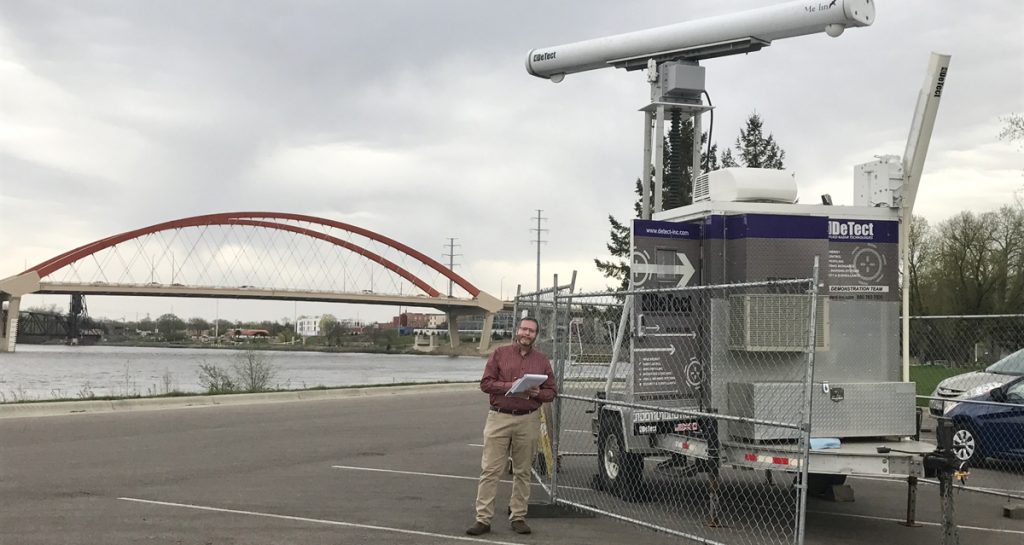Fordham University has teamed up with the National Park Service to conduct the first study exploring the potential risks that bridges pose to migrating birds along the Mississippi River.
Every year, millions of birds die from colliding into buildings, glass, oilrigs, and communications towers. While there have been reports about the impact that these man-made structures have had on birds, researchers don’t yet know how bridges are affecting night-migrating birds.
“The magnitude of migration through our urban landscape is beyond comprehension,” said J. Alan Clark, Ph.D., an associate professor in the Department of Biological Sciences, who is conducting the study. “You might suspect that there could be a problem because some bridges are quite high [and]some of them are very brightly lit and often isolated.”
The study, which began on April 24 and continues through May 13, will focus on three bridges in Minnesota: the Hastings Bridge in Hastings, MN, a free-standing, tied-arch bridge with linear LEDs; the tied-arch I-494 Bridge where Interstate 494 crosses the Mississippi River; and the Washington Ave. Bridge, a six-span bridge with a glass pedestrian upper deck and a vehicular lower deck that connects the University of Minnesota campus in Minneapolis/St. Paul.
“A lot of bridges are probably not problematic,” said Clark. “None of the bridges in the study are like the Golden Gate Bridge or something that’s gigantic. Nonetheless, it would be really good to know [if they’re affecting migrating birds].”
According to Clark, the study will use small-scale vertical and horizontal avian radar to determine how many birds are flying near the brides and what height and direction they’re flying. The radar will also examine whether the birds are being drawn to the bridges if they change the direction of their flight, and whether their trajectory is actually in a collision course with the bridge.
Clark will also use acoustic recorders to monitor the nocturnal flight calls of night-migrating birds, which will help him to identify the species of birds that are flying over the bridges.
Bird watchers from Audubon Minnesota and the University of Minnesota will serve as volunteers, helping to recover any dead or injured birds on the Washington Ave. Bridge, he said.
If the study reveals that bridges in fact have an impact on migrating birds, Clark believes it can help to inspire action, especially given the large numbers of species that migrate. According to the National Audubon Society, at least 4,000 species of birds are regular migrants, which amounts to 40 percent of the total number of birds in the world.
“It’s hard to retrofit things that already exist, but there are things you can do, including changing the lighting systems on the bridges so they deliver less intense lighting, ” he said. “Just knowing whether or not there is a problem with bridges, is the start of the conversation.”


